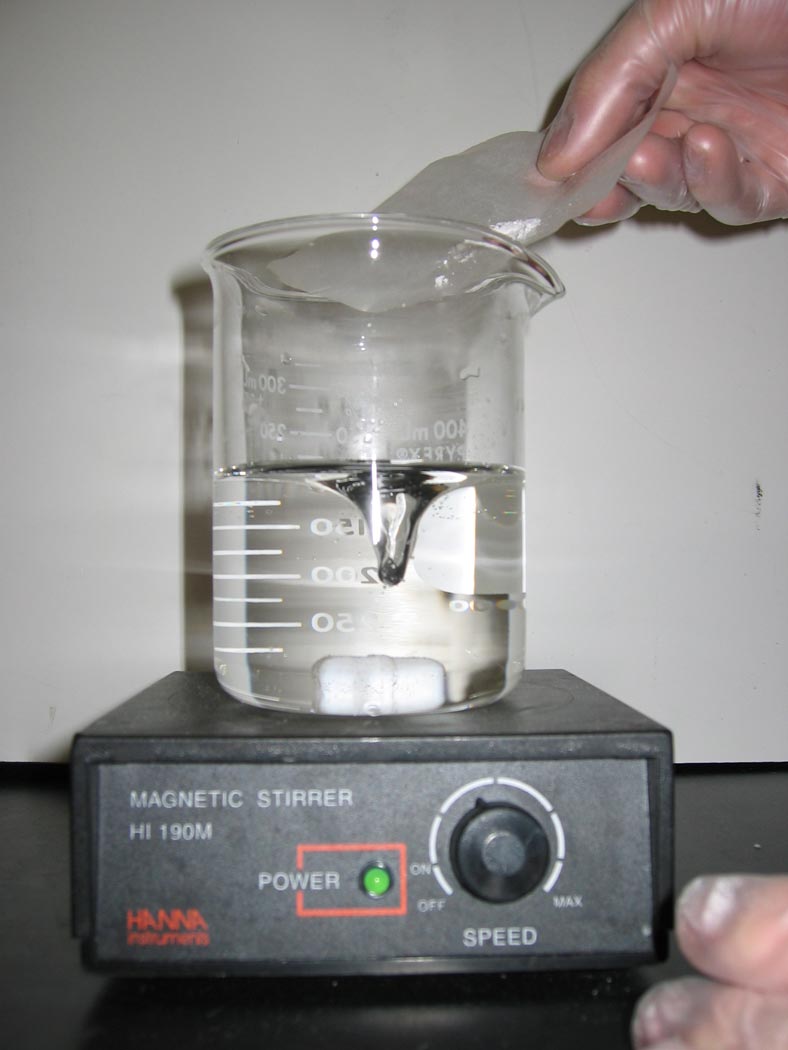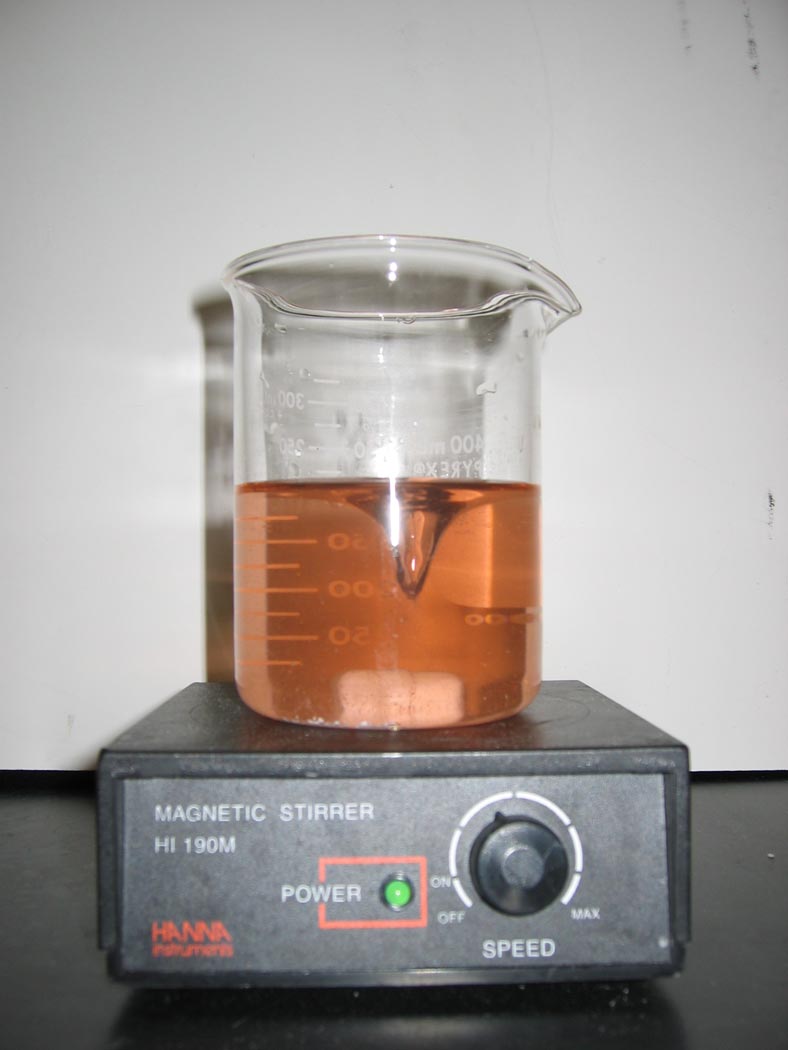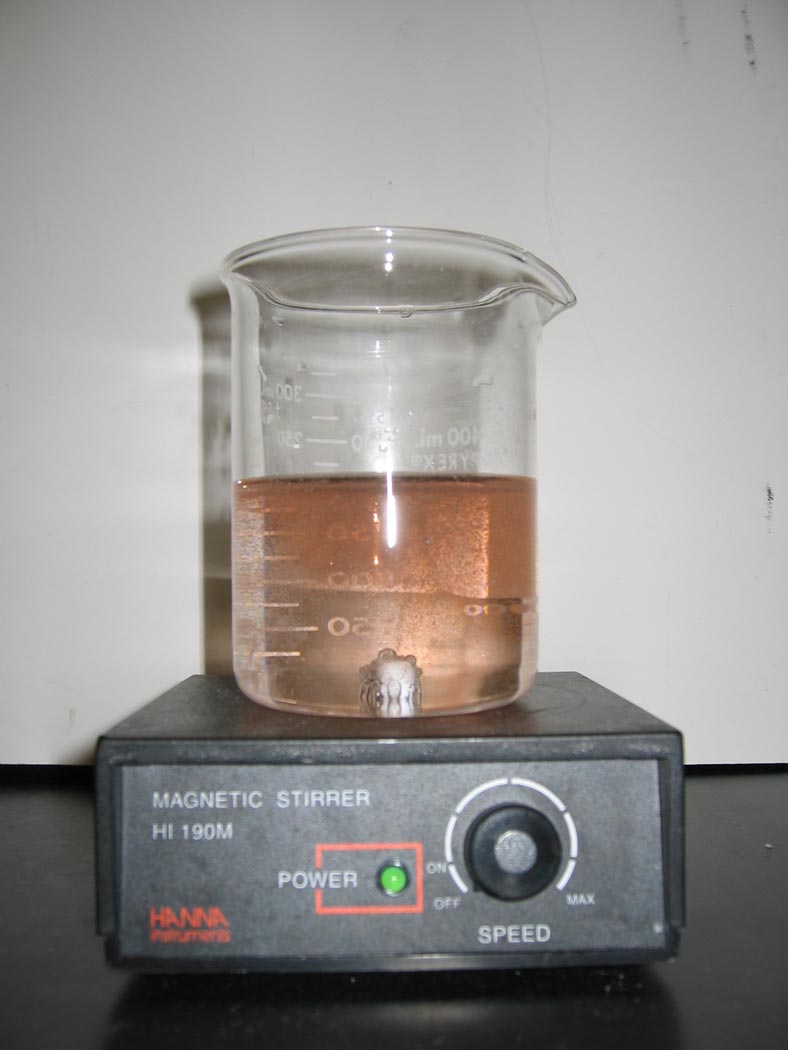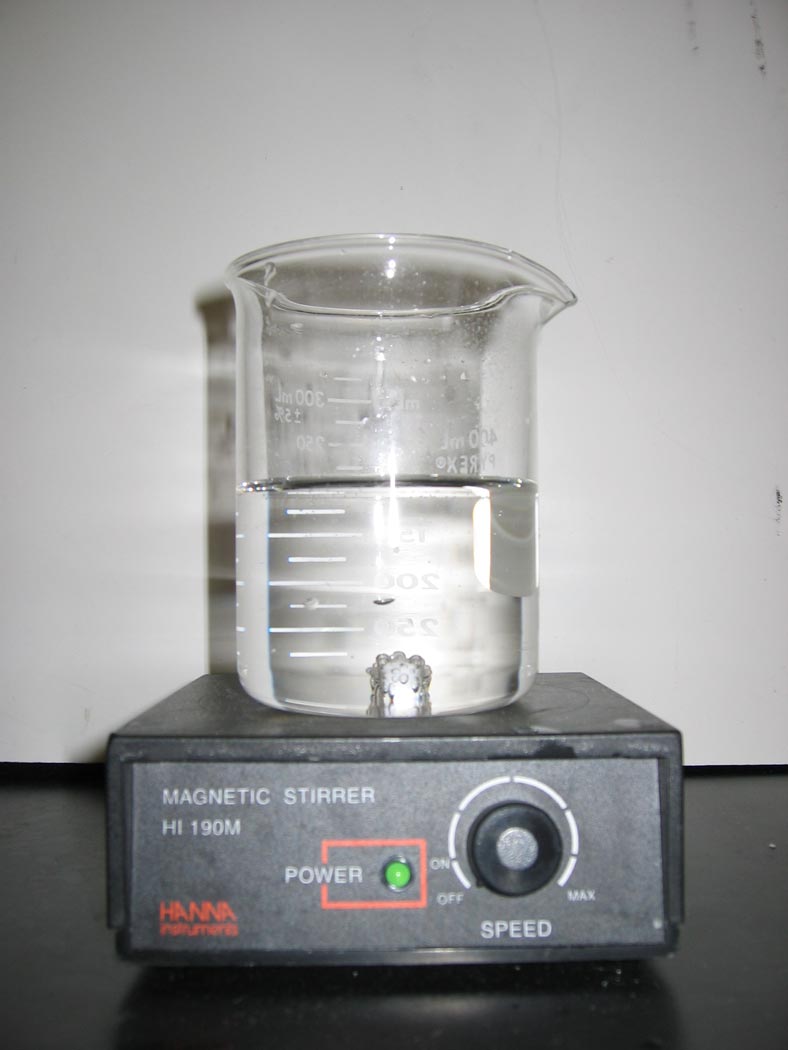There and back again on the way to equilibrium: The Belousov-Zhabotinsky reaction
Powders are added to a clear solution. The solution turns red. Then turns clear, again. Then turns red again. And on and on!












Ingredients: malonic acid, manganese sulfate, potassium bromate, sulfuric acid
Procedure: A partial recipe follows.
1. Prepare a sulfuric acid solution.
2. Add potassium bromate to a beaker of water that is continuously stirred.
3. Add manganese sulfate to solution.
4. Add malonic acid to solution.
Understanding: Boris Belousov was the director of the Institute of Biophysics in the Soviet Union. He carried out research in which he attempted to capture the essential aspects of the Krebs Cycle using simple chemical reagents. In 1951 he reported that he had discovered an oscillating chemical reaction. His claim was roundly rejected. The editor of the journal that Belousov submitted his report to stated that the result was "clearly impossible."
Years later, the Russian biophysicist Anatol Zhabotinsky refined the reagents used (replacing citric acid with malonic acid) and publicized the results more widely. Importantly, Zhabotinsky also discovered that the reaction could not only produce oscillations in time but also in space. The undeniable evidence led to the eventual acceptance of the results.
The oscillating reaction is created by the cycling of reactant to product to reactant. Of course, that can not go on forever. The "recycling" of reactant is carried out at the expense of a reagent that is depleted over the course of the reaction.
In the Belousov-Zhabotinsky reaction, potassium bromate is used to covert protons, contributed by the sulfuric acid, to water with the help of Mn(II) ions. The initial Mn(II) ions are colorless and are converted to red Mn(III) ions
BrO3-(aq) + 5 H+(aq) + 4 Mn2+(aq) → HOBr(aq) + 4 Mn3+(aq) + 2 H2O(l)
In addition to the red Mn(III) ions, a product of the reaction is hypobromous acid, HOBr. A reaction with malonic acid produces bromomalonic acid and more water. The creation of the bromomalonic acid is a key step in the overall reaction cycleCH2(CO2H)2(aq) + HOBr(aq) → BrCH(CO2H)2(aq) + H2O(l)
The bromomalonic acid, a product of the second reaction, is oxidized by the Mn(III) ions, a product of the initial reaction, to recreate the colorless Mn(II) ions in solutionBrCH(CO2H)2(aq) + 4 Mn3+(aq) + 2 H2O(l) → Br-(aq) + HCO2H(aq) + 2 CO2(g) + 4 Mn2+(aq) + 5 H+(aq)
A product of this reaction is bromide ion which is not recycled. An additional product is carbon dioxide gas, which is the source of the effervescence of the solution. The creation of bromide ions is a measure of the depletion of bromate, and the production of carbon dioxide is a measure of the depletion of malonic acid. The reaction cannot oscillate forever as a closed system without the addition of reagents from outside.
Identification of the reductant
Question: In the overall reaction, manganese ions are used as a catalyst. In the first step, the manganese ions are oxidized so that the bromine atoms in bromate are reduced, from a +5 to a +1 oxidation state. In the second step, the bromine atoms are further reduced from a +1 oxidation state, in hypobromous acid, to a -1 oxidation state, in the bromomalonic acid. In this series of reactions, bromine explores all three of its "allowed" oxidation states: 5, 1 and -1.In the final reaction, bromomalonic acid reacts with Mn(III) ions and water to form bromide ion, formic acid, carbon dioxide, Mn(II) ions and protons. Identify the oxidation states of all species in the reaction. If the manganese ions are reduced, what is oxidized?
You can check your answers here.